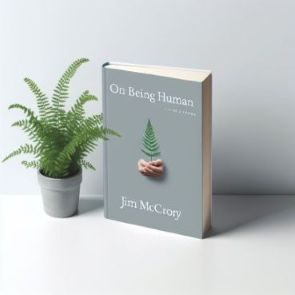“I cried because I had no shoes until I met a man who had no feet.”
Helen Keller

Learning to Walk in Another’s Shoes
I was driving my wife to work this morning when I saw a child and her father waiting at the traffic lights. The girl stood quietly, her small hands clasped together as if in prayer. More likely, she was cold. Yet, in that simple posture, there was something sacred; a child’s instinctive response to life’s chill.
On my way home, I saw them again, walking along the pavement. The little girl’s legs worked hard against the distance, her father walking patiently beside her, adjusting his stride to hers. She could not have been more than five. The scene touched me deeply, stirring memories of a winter long ago.
I grew up in Govan, Glasgow, where the Atlantic wind from the west could cut through any coat. I remember The Big Freeze of 1962–63, when temperatures fell to -22°C in parts of Scotland and the ground stayed iron-hard for weeks whilst the Elder Park pond became a skater's paradise. My mother would rise before dawn to light the coal fire, the smell of smoke and porridge filling our small kitchen. She would pull a balaclava over my head, wrap a scarf tight around it, and send me off to school with a kiss and hug.
Perhaps it was those winters that kindled empathy in me, for genuine empathy is not born in comfort but in shared struggle. It is, as the Bible says, the ability to “rejoice with those who rejoice; mourn with those who mourn” (Romans 12:15). The Greek word used in the New Testament, sumpatheo, means to “suffer with.” It suggests more than pity; it is an entering into another’s experience with the heart.
In truth, empathy, or entering another's experience is also cultivated through stories. Reading has been one of the surest ways we learn walk in another’s shoes. Roll of Thunder, Hear My Cry showed me what it felt like to be a young Black girl navigating prejudice in the American South. Dostoevsky’s The Idiot revealed the quiet agony of being too tender-hearted in a harsh world and I feel the aching of the writer's soul. Dickens taught me that justice is not a cold principle but a human pulse beating beneath the grime of industrial London. And Othello exposed the pain of being victimized by envy and deceit, the terrible loneliness of being misunderstood. Dostoevsky, in The Brothers Karamazov also taught me the challenges of being a believer and facing existential paradoxes.
Each story, like a window opened on a frosted morning, lets in warmth from another life. To read is to thaw the ice around one’s own heart. Empathy, then, is not merely an emotion but a light that burns through coldness—the kind a father carries as he slows his steps for his child on a winter’s morning.
Image by Copilot
